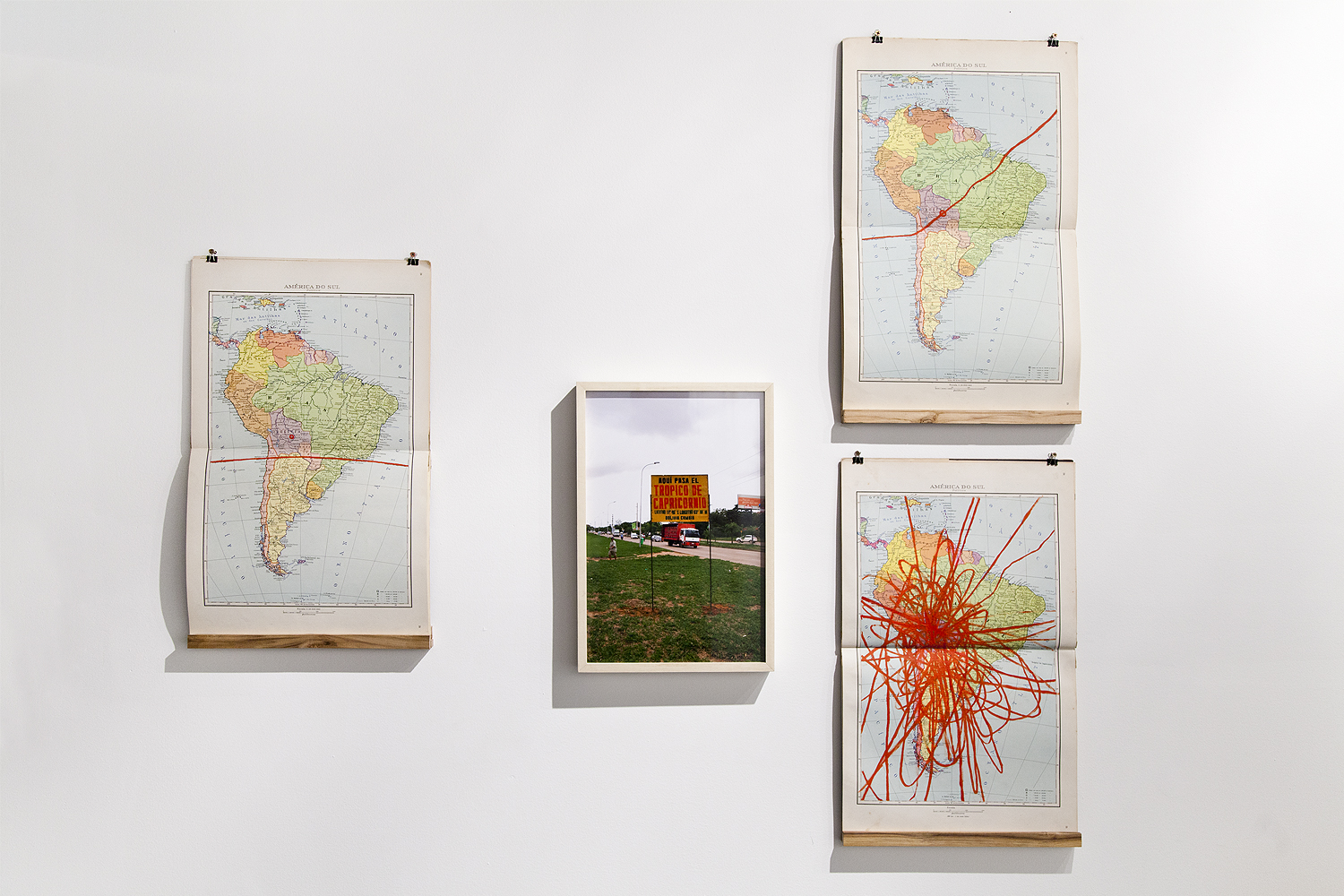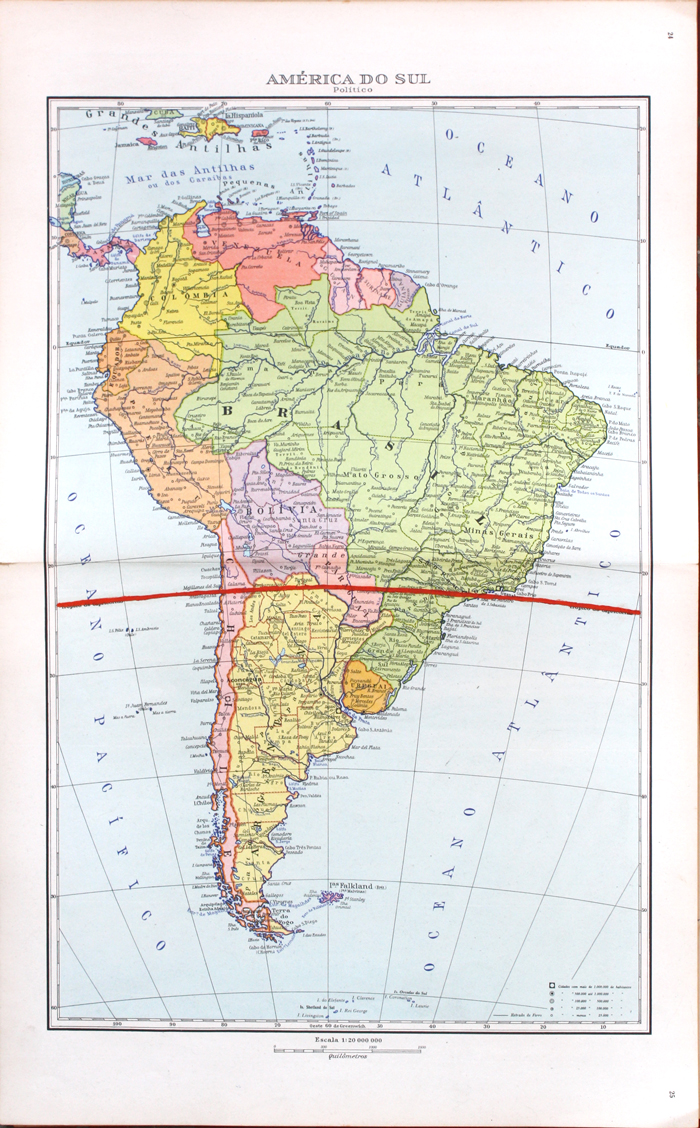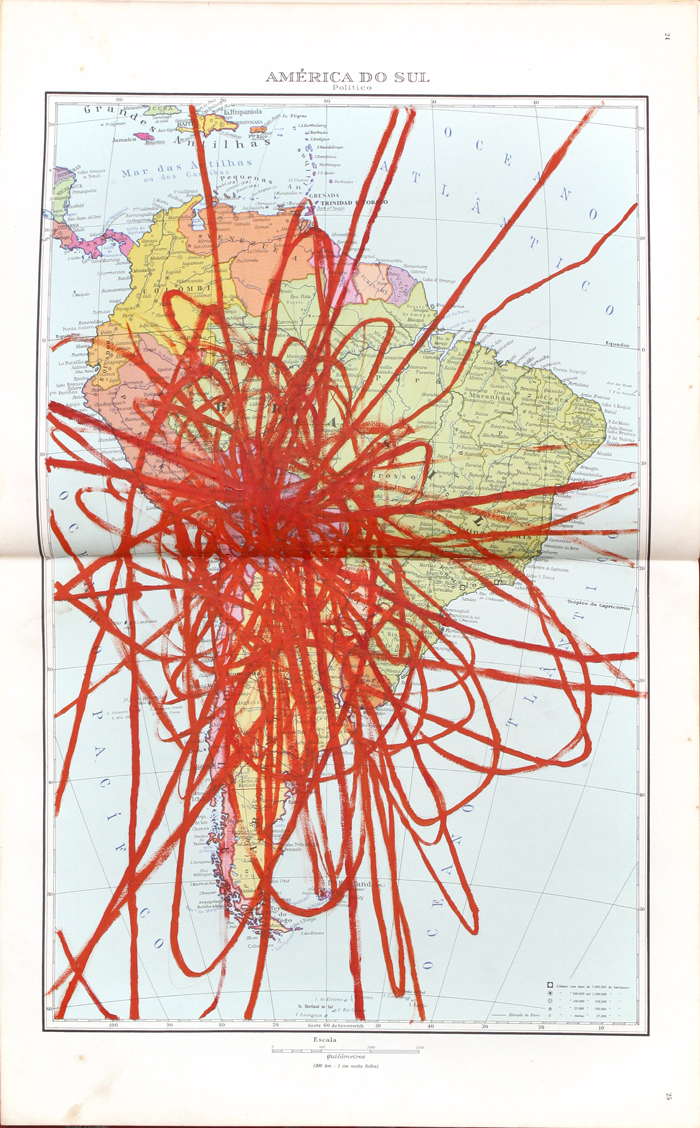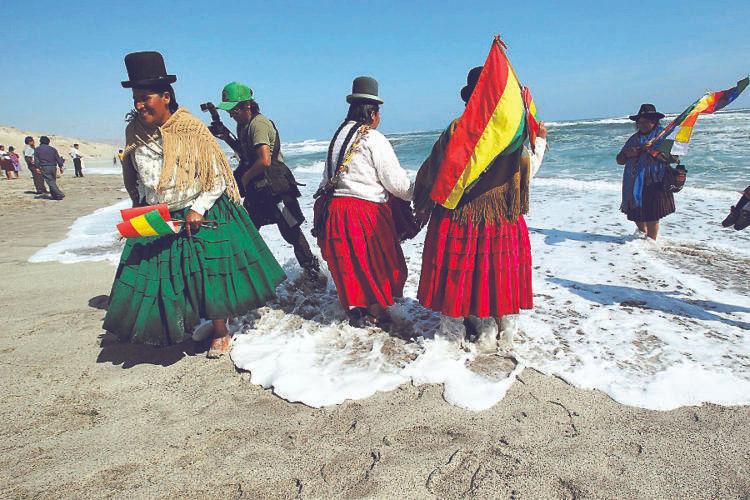Desvío, 2015
Projeto feito durante residência KIOSKO, Santa Cruz de la Sierra, 2015
O trabalho aborda a tentativa utópica de deslocar a linha imaginária do Trópico de Capricórnio, que passa pouco abaixo da fronteira boliviana com o Chile.
A relação com as linhas imaginárias geográficas e uma tentativa impossível utilizam a geografia como fundo para uma briga específica entre a Bolívia e o Chile (o roubo do acesso ao mar por parte do Chile) e de um conflito global que é a ação humana como uma força geofísica que modifica a paisagem.
A relação com o sol é tratada no trabalho em dois momentos: os trópicos representam a última latitude terrestre onde o sol incide em 90º. Por outro lado, a cultura andina garante ao sol uma importância central em sua cultura religiosa. A tentativa do deslocamento desta linha representa um desarranjo nas relações geofísicas e geopolíticas através de uma atitude simbólica.
A impossibilidade e a distância entre a proposição e a realização (uma pequena ação para um deslocamento gigantesco) falam exatamente sobre como essas fronteiras imensas são apenas linhas em um papel e remetem aos movimentos utópicos da esquerda latino americana.
A forma como essa linha é deslocada simbolicamente segue o formato dos letreiros de comunicação presentes na cidade de Santa Cruz de la Sierra.
all works






Diversion, 2015
Project for the KIOSKO residency, Santa Cruz de la Sierra, 2015
The work addresses the utopian attempt to displace the imaginary line of the Tropic of Capricorn, which passes just below the Bolivian border with Chile.
This relation with the imaginary geographical lines and that impossible attempt use Geography as the basis for a specific fight between Bolivia and Chile (Chile’s stealing of the access to the sea) and a global conflict that is the human action as a geophysical force that modifies the landscape.
The relation with the Sun is also addressed by the work in two moments: the tropics represent the last terrestrial latitude where the sun affects 90o, as
well as the Andean culture guarantees to the Sun a crucial importance in its religious culture.
The attempt to displace this geographical line represents a breakdown in geophysical and geopolitical relations through a symbolic attitude. The impossibility and distance between the acts of proposition and
its achievement (a small action for a gigantic displacement) consider exactly how these immense boundaries are only lines in a paper and refer to the utopian movements of the Latin American left wing. The way this line is displaced symbolically follows the format of the communication signs found in the town of Santa Cruz de la Sierra.
Diversion, 2014 Action and documentation
Project for the KIOSKO residency, Santa Cruz de la Sierra, 2015
The work addresses the utopian attempt to displace the imaginary line of the Tropic of Capricorn, which passes just below the Bolivian border with Chile.
This relation with the imaginary geographical lines and that impossible attempt use Geography as the basis for a specific fight between Bolivia and Chile (Chile’s stealing of the access to the sea) and a global conflict that is the human action as a geophysical force that modifies the landscape.
The relation with the Sun is also addressed by the work in two moments: the tropics represent the last terrestrial latitude where the sun affects 90o, as
well as the Andean culture guarantees to the Sun a crucial importance in its religious culture.
The attempt to displace this geographical line represents a breakdown in geophysical and geopolitical relations through a symbolic attitude. The impossibility and distance between the acts of proposition and
its achievement (a small action for a gigantic displacement) consider exactly how these immense boundaries are only lines in a paper and refer to the utopian movements of the Latin American left wing. The way this line is displaced symbolically follows the format of the communication signs found in the town of Santa Cruz de la Sierra.
Diversion, 2014 Action and documentation